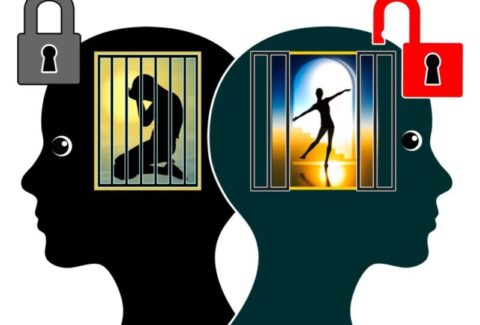The Power of Schema Therapy
In the intricate dance of the mind, deeply ingrained patterns called schemas shape the way we think, feel, and navigate the world. For those seeking profound and lasting change, Schema Therapy[1] emerges as a guiding light, weaving together principles from cognitive-behavioral therapy, psychodynamics, emotional-focused approaches, and attachment theories, among others. Let’s delve into the transformative journey that Schema Therapy offers, unlocking the doors to self-discovery and healing.
Identifying the Threads: Unveiling the Schemas
At the heart of Schema Therapy lies the recognition that our emotional blueprints, known as schemas[2], are often crafted in the tapestry of childhood. These enduring patterns, rooted in unmet needs, shape our responses, relationships, and self-perception. The therapeutic process begins with unraveling these intricate threads, identifying the specific schemas that have woven themselves into the fabric of our lives.
Modes: The Shifting Colors of Emotion
Schemas are dynamic, manifesting in different emotional states known as Schema Modes[3]. These modes, akin to the changing hues of a painting, capture the moment-to-moment experiences and coping responses. Whether it’s the vulnerable child or the overcompensating protector, understanding these modes is key to navigating the complexities of the self.
Early Maladaptive Schemas (EMS): The Core Beliefs
Embedded within the schemas are Early Maladaptive Schemas[4], the core beliefs that underlie our emotional landscape. These themes, such as abandonment, mistrust, or unrelenting standards, become the lenses through which we interpret the world. Unraveling the origins of these core beliefs is fundamental to the transformative process.
Limited Reparenting: Nurturing the Inner Child
A unique facet of Schema Therapy is the concept of “limited reparenting.” Clinicians step into a nurturing role, providing the emotional support and validation that might have been absent in early life. This compassionate approach allows individuals to develop healthier coping mechanisms and build a more secure emotional foundation.[5]
Techniques: Restructuring Thoughts and Behaviors
The therapeutic toolkit of Schema Therapy is diverse, employing cognitive restructuring to challenge negative thoughts, behavioral techniques to address maladaptive coping, and experiential methods to access and process deep-seated emotions. These techniques create a comprehensive approach to change.[6]
Imagery and Visualization: Journeying into Emotional Memory
Harnessing the power of imagery and visualization, Schema Therapy guides individuals on a journey into emotional memory.[7] By accessing and exploring the emotions tied to schemas, individuals gain profound insights into the origins of their patterns, fostering understanding and acceptance.
Mode Dialogues: Navigating Internal Conflicts
In the therapeutic space, mode dialogues unfold—a dialogue between the therapist and different aspects of the individual’s personality or modes. This process illuminates internal conflicts, providing a platform for awareness and resolution.[8]
Empathic Confrontation: Challenging for Growth
Therapists employ empathic confrontation[9], gently challenging maladaptive patterns with understanding and sensitivity. This confrontation becomes a catalyst for growth, encouraging individuals to step beyond their comfort zones and embrace change.
Homework Assignments: Bridging Therapy and Real Life
Schema Therapy extends beyond the therapist’s office through homework assignments. These tasks bridge therapeutic insights with real-life situations, empowering individuals to practice new coping strategies and challenge negative beliefs independently.
Schema Change Processes: A Holistic Transformation
The crux of Schema Therapy lies in targeting various change processes—emotional awareness, cognitive restructuring, behavioral change, and relational shifts. This holistic approach aims not merely for symptom reduction but for a profound transformation of how individuals perceive and engage with their lives.
In the tapestry of the mind, Schema Therapy emerges as an artful weaver of change. It is a transformative journey that goes beyond surface-level adjustments, reaching into the depths of the self. As individuals embark on this odyssey, they unlock the potential for lasting change, discovering the resilience and strength woven into the very fabric of their being. The power to reshape one’s mental tapestry lies within, waiting to be unveiled through the profound and liberating journey of Schema Therapy.
Schema Therapy[10] offers a solution where Cognitive Behavioral Therapy may have fallen short. It integrates various evidence-based practices, including attachment theory, psychodynamic psychotherapy, mindfulness, and Gestalt therapy. This holistic approach blends the best of each method to engage clients effectively.
[1] Rafaeli, Eshkol. “Schema therapy.” Encyclopedia of Personality and Individual Differences. Cham: Springer International Publishing, 2020. 4559-4564.
[2] Brewer, William F., and Glenn V. Nakamura. “The nature and functions of schemas.” Center for the Study of Reading Technical Report; no. 325 (1984).
[3] Arntz, Arnoud, and Gitta Jacob. Schema therapy in practice: An introductory guide to the schema mode approach. John Wiley & Sons, 2017.
[4] Bach, Bo, George Lockwood, and Jeffrey E. Young. “A new look at the schema therapy model: organization and role of early maladaptive schemas.” Cognitive behaviour therapy 47.4 (2018): 328-349.
[5] Gülüm, İ. Volkan, and Gonca Soygüt. “Limited reparenting as a corrective emotional experience in schema therapy: A preliminary task analysis.” Psychotherapy Research 32.2 (2022): 263-276.
[6] Hawke, Lisa D., and Martin D. Provencher. “Schema theory and schema therapy in mood and anxiety disorders: A review.” Journal of cognitive psychotherapy 25.4 (2011): 257-276.
[7] Schaich, Anja, et al. “Experiences of patients with borderline personality disorder with imagery rescripting in the context of schema therapy—A qualitative study.” Frontiers in Psychiatry 11 (2020): 550833.
[8] Kellogg, Scott. “On speaking one’s mind: Using chairwork dialogues in schema therapy.” The Wiley‐Blackwell handbook of schema therapy: Theory, research, and practice (2012): 197-207.
[9] Behary, Wendy T., and Eva Dieckmann. “Schema therapy for narcissism: The art of empathic confrontation, limit‐setting, and leverage.” The handbook of narcissism and narcissistic personality disorder: Theoretical approaches, empirical findings, and treatments (2011): 445-456.
[10] Young, Jeffrey E., Janet S. Klosko, and Marjorie E. Weishaar. “Schema therapy.” New York: Guilford 254 (2003): 653-658.







